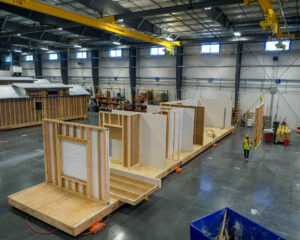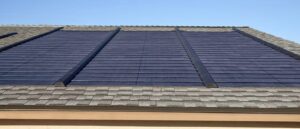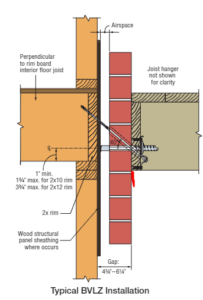Passive house design represents the pinnacle of energy efficiency and comfort in modern construction. This article delves into the technology behind passive house design and explains the benefits of each component. Additionally, we discuss the importance of an integrated design approach, involving architecture, structural engineering, mechanical engineering, and electrical engineering.

Core Components of Passive House Design
- High-Performance Insulation
- Technology: Firstly, passive houses use high-performance insulation with low thermal conductivity. This includes materials like expanded polystyrene (EPS), mineral wool, and vacuum insulation panels.
- Benefits: High-performance insulation reduces heat loss and maintains a stable indoor temperature, enhancing comfort and reducing energy bills.
- Airtight Construction
- Technology: Airtight construction involves sealing gaps and cracks in the building envelope. This is achieved using membranes, tapes, and sealants specifically designed for airtightness.
- Benefits: Airtight construction prevents air leaks, reducing energy loss and improving indoor air quality by minimizing pollutants.
- Advanced Ventilation Systems
- Technology: Passive houses use mechanical ventilation with heat recovery (MVHR) systems. These systems exchange stale indoor air with fresh outdoor air while recovering heat.
- Benefits: As a result, MVHR systems maintain excellent indoor air quality, reduce energy consumption, and provide a consistent, comfortable indoor climate.
- High-Performance Windows and Doors
- Technology: Passive houses feature triple-glazed windows with low-emissivity (low-E) coatings and insulated frames.
- Benefits: These windows and doors minimize heat loss, enhance natural light, and reduce noise pollution .
- Thermal Bridge-Free Design
- Technology: Thermal bridge-free design eliminates or reduces thermal bridges, which are points in the structure where heat transfer is higher.
- Benefits: Consequently, this design component reduces heat loss, improves energy efficiency, and prevents condensation-related issues.
- Solar Gain Optimization
- Technology: Lastly, passive houses optimize solar gain through strategic window placement and shading devices.
- Benefits: This maximizes natural heating during winter and minimizes overheating in summer, reducing the need for artificial heating and cooling.
Importance of an Integrated Design Approach
Achieving the high performance of passive house design requires an integrated design approach. This approach involves collaboration among various disciplines:
- Architecture
- Role: Architects design the building envelope, ensuring optimal orientation and layout for energy efficiency.
- Integration: Architects work closely with engineers to incorporate high-performance insulation, airtight construction, and solar gain optimization.
- Structural Engineering
- Role: Structural engineers ensure the building’s structural integrity while incorporating thermal bridge-free design.
- Integration: They collaborate with architects to select materials that meet both structural and thermal performance requirements.
- Mechanical Engineering
- Role: Mechanical engineers design the heating, ventilation, and air conditioning (HVAC) systems, including MVHR.
- Integration: They ensure the HVAC systems integrate seamlessly with the airtight and insulated building envelope.
- Electrical Engineering
- Role: Electrical engineers design energy-efficient lighting and electrical systems.
- Integration: They work with the team to incorporate renewable energy sources and ensure the electrical systems complement the overall energy strategy.
Conclusion
In conclusion, passive house design relies on advanced building technology and an integrated design approach. Moreover, high-performance insulation, airtight construction, advanced ventilation, and optimized solar gain all contribute to superior energy efficiency and comfort. Collaboration among architects, structural engineers, mechanical engineers, and electrical engineers is essential to achieve these benefits. By understanding and applying these principles, you can harness the full potential of passive house design, leading to a sustainable, comfortable, and energy-efficient home.
The integrated A/E team at EVstudio has extensive experience with Passive House design and all work on a single, unified team. We also work directly with industry partners like Phoenix Haus to bring you complete solutions. Therefore, reach out to us today to discuss your next Passive House project.
Sources:
- U.S. Department of Energy. “Insulation Materials.” energy.gov.
- Passive House Institute. “Airtight Construction in Passive Houses.” passivehouse.com.
- American Society of Heating, Refrigerating and Air-Conditioning Engineers (ASHRAE). “Mechanical Ventilation with Heat Recovery.” ashrae.org.
- Efficient Windows Collaborative. “High-Performance Windows.” efficientwindows.org.
- Building Science Corporation. “Thermal Bridges and Their Impact on Building Envelopes.” buildingscience.com.
- National Renewable Energy Laboratory. “Solar Gain Optimization in Building Design.” nrel.gov.









